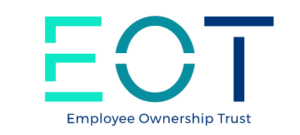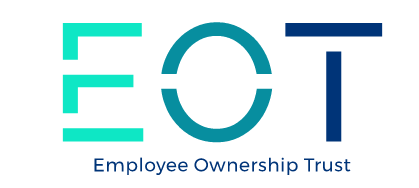Implementing an Employee Ownership Trust
// How to..
A Comprehensive Guide to Implementing an Employee Ownership Trust
Transitioning to an employee ownership trust (EOT) is a complex process that requires meticulous planning and execution. Done right, it can enrich your company's workforce and future. Done poorly, and you will struggle to realize the benefits.
This extensive guide delves deep into the key phases and components needed to successfully implement an employee ownership trust.



What can UKEOT.co.uk do for you
Gaining this level of understanding will empower you to establish an EOT for sustainable success. Let's get started.
- Detailed legal and compliance steps
- Trust administration and governance best practices
- Valuation guidance
- Communications strategy
- Components of the implementation plan
- Leadership alignment tactics
- Launch event considerations
- Post-launch actions to drive adoption
What is an Employee Ownership Trust?
First, a quick refresher on the employee ownership trust model:
- Company shareholders transfer some or all of their shares into a legal trust vehicle.
- Trustees are appointed to manage the shares in the employees’ interests.
- Employees do not directly own the shares but become beneficiaries of the assets the trust holds.
- Employees participate financially through dividends and increased share value over time.
- Employees may get representation on issues through a committee or body elected by the workforce.
The use of a trust and lack of direct ownership differentiates EOTs from other employee ownership approaches. When implemented effectively, EOTs can incentivize employees and provide tax advantages.
Phase 1: Building the Legal Foundation
The first implementation phase focuses on establishing a sound legal basis for the EOT:
Selecting the Trust Vehicle
In the UK, EOTs are usually structured as discretionary or umbrella trusts due to their flexible nature. Weigh the pros and cons of each with your advisors.
Drafting the Trust Deed
The trust deed acts as the EOT’s constitution. It should be comprehensive across rules, rights, governance, share transfers, profit allocations, trustee powers, and more.
Appointing Trustees
Select independent trustees with care, as their oversight protects employees’ interests. Multiple trustees enable checks and balances. Agree on remuneration.
Transferring Shares to the Trust
This share transfer is fundamental to creating the EOT. The number, value, and class of shares, as well as the cadence of transfers, must align to the company’s circumstances.
Regulatory and Tax Considerations
Solicit advisor guidance on required company reporting, filings, and compliance rules to keep the EOT aligned with regulations and optimize associated tax treatment.
A robust legal framework and setup provides the necessary foundation for launching the EOT. Do not rush these foundational steps.
Phase 2: Establishing Ongoing Administration
Once legally formed, the EOT must be actively administered:
Defined Administrative Procedures
Clarify processes the trustees will follow for administration, record keeping, annual reports, distributing dividends, holding AGMs, issuing shares, filing taxes, and other duties.
Share Management Governance
Trustees direct all shareholder voting rights under the EOT. Create a governance charter that codifies how they will execute proxy voting, corporate decisions, and other powers.
Profit Allocation Rules
The trust deed will define the formula for allocating profits to employees. Consider provisions for performance-based allocation and dividing funds between dividends, reinvestment, operations, etc.
Ongoing Valuation Cadence
Periodic valuation informs profit allocation and potential share transactions. Consider annual valuation by an independent assessor. Communicate results.
Adding New Employee Beneficiaries
Define eligibility for new hires to become beneficiaries. Outline a process for granting them interest in the EOT and associated financial benefits.
Rigorous administration and governance post-launch helps optimize implementation. Do not underestimate these responsibilities.
Phase 3: Company Valuation
Valuing the overall company and its shares is crucial to establishing the EOT’s foundation:
Selecting a Valuation Methodology
Common approaches include discounted cash flow, multiple of revenue or EBITDA, real options, asset-based, and more. Weigh their pros and cons.
Conducting an Objective Assessment
Ideally, engage an independent valuator to conduct the valuation. Trustees can also direct, but should seek input from company leadership.
Defining Share Value and Structure
Given the overall company value, assign values to the shares transferred into the EOT, along with share classes and types. This informs profit allocation.
Securing Leadership Alignment
The valuation process and results should align with leadership expectations. Address any gaps proactively through dialogue and transparency.
Ongoing Reassessment Planning
Plan cadence for periodic revaluation, such as every 1-3 years. This will account for company growth and inform potential additional share transfers to the EOT.
A fair, agreed-upon valuation forms the economic foundation of the EOT. Expect this to be a lengthy process requiring external experts.
Phase 4: Communicating with Employees
For employees to welcome the EOT, they must understand it. Develop a robust communication plan:
Educating Employees on the Model
Explain what an EOT is, how it will operate, and the rights employees gain in multiple formats such as presentations, videos, manuals, and Q&A forums.
Soliciting Ongoing Feedback
Create channels for employees to ask questions, raise concerns, offer suggestions, and give feedback during the implementation process and after launch.
Articulating Benefits and Incentives
Underscore how employees will benefit through profit distributions, future gains in share value, having an ownership voice, and sharing in the company’s growth.
Outlining Expected Commitments
Be transparent around any commitments expected from employees regarding culture, values, and performance standards under the EOT model.
Reinforcing Key Messages
Distill 4-5 key messages to repeat across communication touchpoints. Stay on narrative around the EOT’s purpose and employee advantages.
Proactive communication and expectation-setting secures critical employee buy-in.
Phase 5: Crafting the Implementation Plan
A structured plan guides the rollout:
Defining a Phased Timeline
Break the implementation into logical phases based on activities like establishing the trust, appointing trustees, transferring shares, going live, and evaluating. Build in buffer room.
Creating a Cross-Functional Team
Involve company leadership, legal, HR, finance, operations, and communications in the planning and rollout. Cover all critical skill sets.
Tracking Progress and Milestones
Define milestones for each phase’s completion. Track progress to hit target dates across multiple workstreams. Use project management software.
Identifying Risks and Dependencies
Document implementation risks and dependencies that could cause delays if unaddressed. Create mitigation plans.
Developing Contingencies
Outline contingency responses if implementation goes off-track, like scaling back initial share volume or delaying the launch date.
Meticulous planning and tracking ensures smooth execution across the demanding implementation workload.
Phase 6: Securing Leadership Alignment
Leadership across the organization must exemplify EOT commitment:
Engaging Directors
Position the EOT transition as part of the company’s ambitious future vision. Ensure directors endorse this direction.
Cascading Messaging
Have leadership at all levels relay consistent messaging on the EOT’s benefits through company meetings, email, events, and personal communications.
Modeling Desired Culture
Leadership should role model the types of behaviors expected in an employee-owned culture, like transparency, collaboration, and purpose-driven actions.
Maintaining Two-Way Communication
Encourage feedback to leadership through open office hours, informal lunches, and other touchpoints. Take action on concerns raised.
Providing EOT Education
Ensure leaders themselves receive deep education on the EOT model. They cannot communicate the unknown.
Alignment between leadership and the EOT vision is essential from planning through post-launch.
Phase 7: Planning a Strong Launch
A dynamic launch event generates momentum and participation:
Rallying Employees Leading Up to Launch
Build energy through a launch countdown, event teaser communications, unveiling the logo and identity, and other activations.
Marking the Milestone
Commemorate the EOT establishment through a special event for employees featuring ceremonies, guest speakers, gifts, meals, and entertainment.
Recognizing Contributions
Find ways to celebrate everyone who helped make the EOT possible, from planners to advisors. This motivates ongoing participation.
Setting the Course
Reinforce how this milestone marks the starting point for a new ambitious chapter enabled by shared employee ownership.
A celebratory, purpose-driven launch powers engagement and sets the right cultural tone.
Phase 8: Supporting Post-Launch Success
After launch, leadership’s involvement continues through:
Stewarding the Transition
In the months following launch, regularly communicate, reinforce EOT advantages, provide status updates, and keep momentum high.
Promoting an Ownership Culture
Encourage desired behaviors through leading by example, new policies, training programs, and rituals that reflect the employee ownership culture.
Addressing Concerns
If post-launch concerns around the EOT emerge, address them head on through transparent discussion and clarification.
Reporting on Progress
Share financial performance benchmarks, profit distribution details, and other metrics demonstrating the EOT’s progress and employee benefits.
This critical post-launch period sets the stage for long-term adoption success.
Key Takeaways for EOT Implementation
Keep these best practices in mind across implementation phases:
- Invest time upfront in structuring a detailed trust deed and appointing strong trustees to provide a robust legal foundation.
- Maintain rigorous administration through defined processes and governance procedures.
- Involve independent experts to guide company valuation and share definition.
- Start early and sustain clear, empowering communications with employees.
- Develop a structured project plan and follow it diligently while tracking progress.
- Secure passionate commitment from leadership through proactive involvement.
- Build excitement and reinforce purpose through a dynamic launch event.
- Steward adoption by reinforcing the EOT’s benefits and value post-launch.
While complex, following this in-depth blueprint will lead to effective execution and engaged employee-owners.
Conclusion: Invest Now for Shared Success Later
Implementing an employee ownership trust takes time, resources, and commitment. But it is an investment that pays long-term dividends in employee motivation, financial performance, and shared prosperity.
By taking an educated approach, structuring each phase deliberately, and enlisting help from experts, company leaders can transform their organization through broad-based ownership.
The journey requires patience and dedication. But the returns make it worthwhile. So be sure to invest the effort now to implement your EOT successfully.
The ultimate reward will be flourishing under a sustainable employee ownership structure where everyone moves ahead together. Get started on the path today.
If you’re considering establishing an employee ownership trust, the team at UKEOT.co.uk can guide you through the entire process.
With decades of combined experience advising on EOT transitions, our experts are perfectly positioned to handle the end-to-end implementation and operation of an employee ownership trust for your organisation.
We can assist with:
- Assessing if an EOT is right for your goals and business structure
- Managing the legal setup and meeting filing requirements
- Drafting a tailored trust deed and appointing independent trustees
- Transferring company shares into the employee ownership trust
- Valuing the business and defining profit allocation mechanisms
- Communicating details to employees and establishing representation
- Providing ongoing administration, compliance, and guidance after launch
An EOT provides a powerful opportunity to engage your workforce and sustain your legacy. But realizing the benefits involves navigating complex legal, financial, and cultural considerations.
Don’t go it alone – leverage our full range of EOT services today. Get in touch for an initial consultation, or explore our website for useful resources to inform your transition to an employee ownership trust.
With UKEOT.co.uk’s expertise, you can implement an EOT with confidence, transfer ownership smoothly, and operate a productive employee-owned business. Contact us to make employee ownership a reality.






